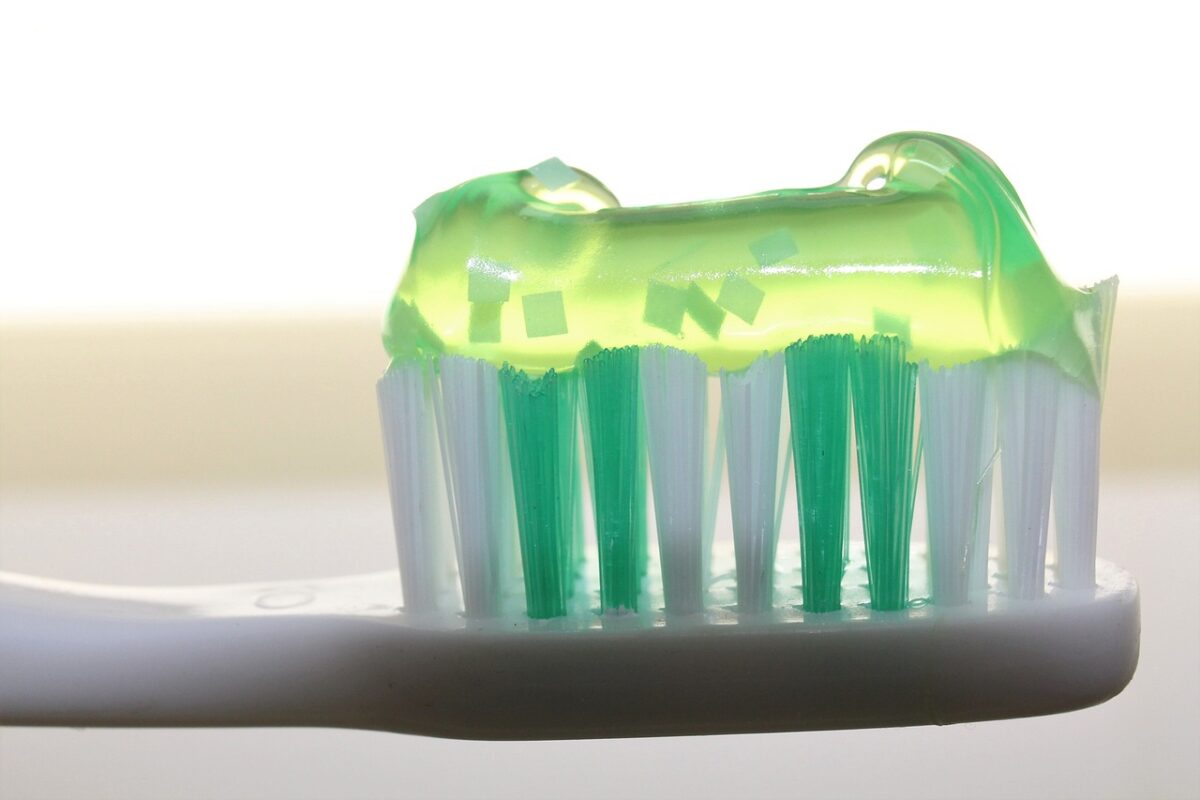Vibrating screens play a crucial role in separating delicate toothpaste ingredients, ensuring quality and consistency in every tube.
Introduction
The Importance of Precision in Toothpaste Production
The production of toothpaste involves highly specific formulations, where each ingredient serves a unique purpose, from providing texture to ensuring the final product’s efficacy. Precision in the manufacturing process is paramount to ensuring the correct ratios and quality of ingredients. If even the slightest error occurs during the separation of delicate components, it can compromise the effectiveness, texture, or flavor of the toothpaste. Therefore, the ability to separate ingredients with absolute precision is essential for achieving the desired end product.
The process of creating toothpaste requires exacting standards, particularly when handling delicate components. Each ingredient must be treated with care to preserve its properties while ensuring consistency across every batch. Vibrating screens have emerged as a critical tool for enhancing the precision of ingredient separation, facilitating the production of toothpaste that meets stringent quality and performance standards.

Why Delicate Ingredient Separation Is Crucial for Quality
Toothpaste formulations often contain multiple ingredients, such as abrasives, fluoride, humectants, flavoring agents, and binders. Each of these components plays a crucial role in the final product’s texture, consistency, and performance. However, not all ingredients behave the same way during production. Some are more fragile and sensitive to external forces, making them more prone to damage during processing.
Effective separation of delicate ingredients ensures that each component maintains its intended function and quality. When delicate ingredients are improperly separated or damaged, it can lead to a variety of issues, such as poor texture, inconsistent performance, or even adverse effects on oral health. This is where vibrating screens come into play, as they provide the necessary precision to separate these components without causing harm.
Understanding Vibrating Screens
What Are Vibrating Screens and How Do They Work?
Vibrating screens are mechanical devices used to separate materials of different sizes, shapes, or properties. They consist of a screen surface that vibrates at specific frequencies to help materials pass through small openings based on their size. In the context of toothpaste manufacturing, vibrating screens are designed to filter out unwanted particles, sort ingredients according to their specific size, and ensure that only the optimal materials are retained for further processing.
The mechanism behind vibrating screens involves a combination of vibration and gravity. When an external force causes the screen to vibrate, materials on the screen surface are subjected to a series of movements. This shaking motion helps to separate materials by size, allowing finer particles to pass through while larger particles remain on the surface. This process is particularly effective in situations where precise separation is required, such as in the handling of delicate toothpaste ingredients.
The Role of Vibration Frequency and Amplitude in Separating Ingredients
The performance of a vibrating screen is heavily influenced by its vibration frequency and amplitude. Vibration frequency refers to the number of oscillations a screen makes per second, while amplitude refers to the distance the screen moves during each vibration. Together, these factors determine how efficiently the screen separates materials.
In toothpaste production, the delicate nature of some ingredients necessitates careful control of both frequency and amplitude. Too high of a vibration amplitude or an incorrect frequency could cause fragile particles to break apart, potentially damaging the ingredients. By fine-tuning the vibration settings, manufacturers can optimize the separation process, ensuring that delicate ingredients such as flavoring agents, abrasives, or binders remain intact and undamaged while ensuring effective separation.

The Need for Separating Delicate Toothpaste Ingredients
Why Toothpaste Ingredients Require Precise Separation
The ingredients in toothpaste are often mixed in precise proportions to achieve a specific function. Abrasives, for example, must be finely ground to avoid damaging the enamel of teeth, while fluoride needs to be distributed evenly to ensure its effectiveness in cavity prevention. Each ingredient has a specific role and must be present in the correct quantity and form for the product to function optimally.
However, many of these ingredients are fragile and can be easily damaged if subjected to harsh processing methods. For example, natural extracts used for flavoring are delicate and may lose their potency if improperly handled. The precise separation of ingredients using vibrating screens allows each material to retain its integrity, leading to a high-quality toothpaste product that meets both functional and aesthetic requirements.
Challenges in Handling Delicate Toothpaste Components
Handling delicate components in toothpaste production comes with its challenges. Many ingredients, such as natural extracts, are highly sensitive to heat, pressure, or mechanical stress. Overly aggressive methods of separation can result in degradation, contamination, or loss of essential properties.
Moreover, some ingredients are more prone to clumping or sticking together, creating difficulties during the separation process. If not properly separated, these clumps can affect the consistency of the final product and reduce its effectiveness. Vibrating screens offer an ideal solution to these challenges, providing a gentle yet effective means of sorting and separating delicate toothpaste ingredients without causing harm.
How Vibrating Screens Ensure Effective Separation
Optimizing Screen Mesh for Toothpaste Ingredient Separation
The selection of the appropriate screen mesh is critical for achieving precise separation in toothpaste production. The mesh size determines the size of particles that will pass through the screen and those that will be retained. For delicate ingredients, a finer mesh is often required to ensure that only the desired particle size is retained, while smaller or undesirable particles are allowed to pass through.
Optimizing the screen mesh size for each specific ingredient allows manufacturers to achieve the highest level of purity and consistency in their products. A customized approach to mesh selection ensures that delicate ingredients are separated with minimal impact on their structure or quality.
Balancing Vibration Force to Avoid Damage to Delicate Ingredients
As mentioned earlier, the vibration force plays a crucial role in ensuring that delicate ingredients are not damaged during the separation process. Too much force can crush or alter the composition of sensitive materials, rendering them ineffective or substandard.

Vibrating screens can be calibrated to provide the optimal balance of vibration force, ensuring that the ingredients are gently agitated without causing any harm. By carefully adjusting the vibration parameters, manufacturers can achieve the desired separation while maintaining the integrity of all ingredients, no matter how delicate.
Choosing the Right Type of Vibrating Screen for Toothpaste
The type of vibrating screen used for toothpaste ingredient separation is also a critical consideration. Different types of vibrating screens, such as linear or circular models, offer varying degrees of efficiency depending on the specific application.
For example, a circular vibrating screen might be best for coarse materials or larger particle sizes, while a linear vibrating screen might be more effective for finer materials that require more precise separation. Choosing the right vibrating screen for the task ensures that the separation process is optimized for each type of ingredient, resulting in a higher-quality final product.
Benefits of Vibrating Screens in Toothpaste Manufacturing
Increased Consistency and Quality of Final Product
Vibrating screens offer significant improvements in the consistency and quality of toothpaste products. By ensuring that ingredients are separated precisely and gently, these screens help maintain the desired formulation and prevent variations in texture, color, or flavor. This leads to a more uniform product that meets quality standards and satisfies customer expectations.
Reduction in Material Waste and Improved Yield
Another key benefit of using vibrating screens in toothpaste manufacturing is the reduction in material waste. With more precise separation, fewer ingredients are lost during the production process, leading to higher yield rates and more efficient use of materials. This not only improves profitability but also helps reduce the environmental impact of production by minimizing waste.
Boosting Production Efficiency and Reducing Operational Costs
Vibrating screens also contribute to overall production efficiency. By automating the separation process and reducing the need for manual sorting, manufacturers can achieve faster production cycles with fewer errors. This efficiency translates into cost savings, as less time and labor are required for each batch of toothpaste. Additionally, the precision of the screens helps reduce the need for rework or batch adjustments, further lowering operational costs.
Conclusion
The Future of Vibrating Screens in Toothpaste Production
As toothpaste production continues to evolve, the role of vibrating screens will only grow more important. With increasing demand for higher-quality products and more complex ingredient formulations, the ability to precisely separate delicate components will become even more crucial. Innovations in vibrating screen technology are likely to lead to even more efficient and sustainable production methods, offering exciting possibilities for the future.
Ensuring Quality and Efficiency with Advanced Separation Technology
Advanced vibrating screen technologies provide an unparalleled level of control over the separation process, ensuring both quality and efficiency in toothpaste production. By leveraging these tools, manufacturers can continue to produce high-quality toothpaste products that meet consumer demands and industry standards. As the technology continues to evolve, so too will the ability to achieve greater precision, consistency, and efficiency in toothpaste manufacturing.
